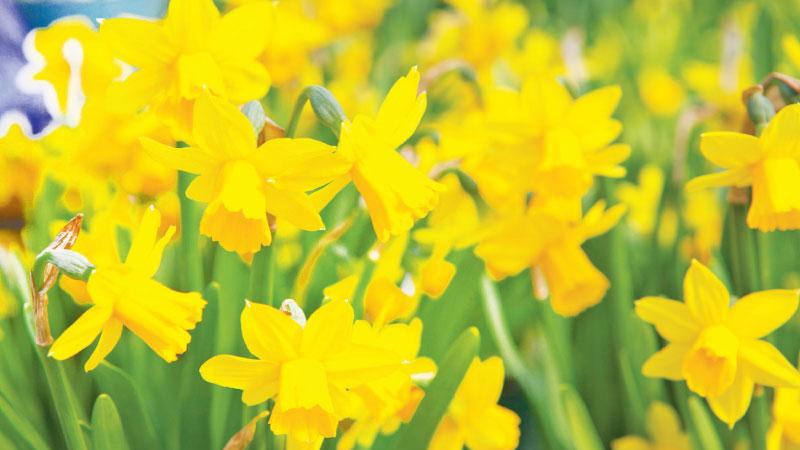
Whoever thought that flowers have a language of their own? As in many fields, the Greeks were the first to develop a language of flowers. They called it ‘Florigraphy.’
Over the past centuries of Western civilisation many different species of flower language came into existence. Everything depended on their properties associated with a wide range of human emotions, conditions, and events. Some of the plays of William Shakespeare are a useful source of traditional flower language. For instance, Ophelia in ‘Hamlet’ describes the significance of the flowers she carried. According to her, pansies stand for thought, rosemary for remembrance, and herb for grace. Flower language was particularly popular in the 19th century in Europe and the United States. It became a part of the then fashionable cult of sentimentality.
Every flower is a terminal branch consisting of modified stem, the floral axis, or four types of specialised appendages, or modified leaves, usually arranged in whorls in the more advanced flowers and spirally arranged in the more primitive ones. In a typical flower the outermost whorl, called the ‘calyx’ consists of a number of sepals that protect the flower bud before it blooms.
When we talk about flowers, we cannot forget to mention their fragrance. The fragrance is caused by minute quantities of volatile oils formed by the alteration of essential oils in the petals. Manufacturers make natural perfumes using essential oils particularly found in hyacinth, rose, heliotrope, mimosa, jasmine and violet. The fragrance attracts pollinators to the flower. Some flowers give off putrid odours to attract pollinators. Such flowers are usually known as carrion flowers as they smell like rotten flesh.
Floral symbols
In ancient times floral symbols had been used extensively in the writings and inscriptions. For instance, the Old Testament contains many allusions to flowers, notably in the Song of Solomon. In ancient Egypt, the lotus was associated with the life-giving power of the Nile River. The Indian lotus was sacred to the Hindus who believed that Brahma had been born in it. Hindu and Buddhist deities are frequently represented seated on a lotus flower.
In ancient Greece, the laurel was sacred to God Apollo and laurel wreaths were awarded to poets. Great symbolism has been attached to the rose. In ancient Rome, the rose signified secrecy. Conversations carried on at a council or banquet table ‘sub rosa’ (under a rose) were supposed to be in confidence. In the Islamic tradition, white roses fell from the sweat of Mohammed on his way to heaven.
There is an old saying: “As a person treats flowers, so will he treat folk.” As Hillard said, “The instinctive and universal taste of mankind selects flowers for the expression of its finest sympathies, their beauty and fleetingness serving to make them the most fitting symbols of those delicate sentiments for which language seems almost too gross a medium.”
Conventions
From time immemorial people have given flowers to express their feelings in an elegant way. They give flowers to say ‘Thank you!’ ‘I love you’, or’Accept my heartfelt condolences.’ Flowers were also given on birthdays or even to celebrate national holidays. However, over the years certain conventions have developed with the presenting of flowers. Today, people believe that every flower has its own message. In addition, every flower is a symbol of something or the other. What a flower symbolises can vary from country to country.
Out of all the flowers the rose is considered the queen of flowers. For this reason, roses are not given in cartloads. Even a single rose or three or four blooms are sufficient to express your feelings. As there are many types of roses, great care should be taken when giving them. On the other hand, the tulip is given to convey feelings of hope and goodwill. If you wish to express your love to someone, give her a red rose, red tulip or a carnation.
The iris is a symbol of good news. Unless you have a piece of good news, do not give an iris because the recipient will be confused. The peony with its luxurious appearance is given to express a feeling of caution or doubt on the part of the giver. The geranium is usually given in a pot with the words, ‘Wishing you happiness!’. The narcissus expresses egoism and vanity. If you are going to see an elderly person who is ailing, give him an aster which expresses a wish for good health and long life. While the cyclamen symbolises fidelity and sincere friendship, the violet says, “Remember me with affection.” If you give a pansy to a girl, you have some hopes about her. If she accepts it, you are lucky!
Poets have waxed eloquent on flowers. This is how William Wordsworth saw a host of golden daffodils:
Daffodils
I wander’d lonely as a cloud
That floats on high o’er vales and hills,
When all at once I saw a crowd,
A host of golden daffodils
Beside the lake, beneath the tree
Fluttering and dancing in the breeze.
Continuous as the stars that shine
And twinkle, on the milky way,
The stretch’d in never ending line
Along the margin of a bay;
Ten thousand saw I at a glance
Tossing their heads in sprightly dance.
The waves beside them danced but they
Outdid the sparkling waves in glee;
A poet could not but be gay
In such a jocund company!
I gazed and gazed but little thought
What wealth the show to me had brought
For oft,when on my couch I lie
In vacant or in pensive mood,
They flash upon that inward eye
Which is the bliss of solitude
And then my heart with pleasure fills
And dances with the daffodils.
Like other old traditions, you can treat the language of flowers with a measure of humour. But still, traditions lend a certain charm to our humdrum lives, don’t they?
